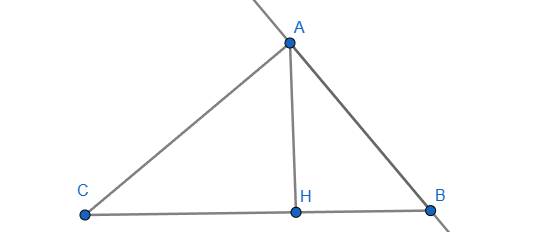
GIẢI CHI TIẾT GIÚP MÌNH VỚI
Hãy nhập câu hỏi của bạn vào đây, nếu là tài khoản VIP, bạn sẽ được ưu tiên trả lời.


pt thứ hai \(\Leftrightarrow\) \(y^2-\left(3x+2\right)y+2x^2+3x+1=0\) (*)
Ta có \(\Delta=\left[-\left(3x+2\right)\right]^2-4\left(2x^2+3x+1\right)\)
\(=9x^2+12x+4-8x^2-12x-4\)
\(=x^2\ge0\)
Do đó (*) có 2 nghiệm là \(\left[{}\begin{matrix}y=\dfrac{-b+\sqrt{\Delta}}{2a}=\dfrac{3x+2+\sqrt{x^2}}{2}=\dfrac{3x+2+\left|x\right|}{2}\\y=\dfrac{-b-\sqrt{\Delta}}{2a}=\dfrac{3x+2-\sqrt{x^2}}{2}=\dfrac{3x+2-\left|x\right|}{2}\end{matrix}\right.\)
Không mất tính tổng quát, giả sử \(x\ge0\). Khi đó:
\(\left[{}\begin{matrix}y=\dfrac{3x+2+x}{2}=\dfrac{4x+2}{2}=2x+1\\y=\dfrac{3x+2-x}{2}=\dfrac{2x+2}{2}=x+1\end{matrix}\right.\)
Nếu \(y=2x+1\) thì thay vào pt đầu tiên, ta có:
\(x^2+\left(2x+1\right)^2+x+2x+1=8\)
\(\Leftrightarrow5x^2+7x-6=0\)
\(\Leftrightarrow\left[{}\begin{matrix}x=\dfrac{3}{5}\left(nhận\right)\\x=-2\left(loại\right)\end{matrix}\right.\) \(\Rightarrow y=2x+1=2.\dfrac{3}{5}+1=\dfrac{11}{5}\)
Nếu \(y=x+1\) thì thế vào pt đầu tiên, ta có:
\(x^2+\left(x+1\right)^2+x+x+1=8\)
\(\Leftrightarrow2x^2+4x-6=0\)
\(\Leftrightarrow\left[{}\begin{matrix}x=1\left(nhận\right)\\x=-3\left(loại\right)\end{matrix}\right.\) \(\Rightarrow y=x+1=1+1=2\)
Vậy ta tìm được 2 cặp nghiệm là \(\left(\dfrac{3}{5},\dfrac{11}{5}\right)\) và \(\left(1,2\right)\)
Tương tự như vậy, xét TH \(x< 0\) thì ta tìm được thêm 2 cặp nghiệm chính là \(\left(-2,-3\right)\) và \(\left(-3,-2\right)\)


Xét tam giác ABC vuông tại A có AH là đường cao
\(BH.BC=AB^2\)
\(\Rightarrow\left(BC-HC\right)\cdot BC=AB^2\)
\(\Rightarrow\left(BC-19,2\right)\cdot BC=AB^2\)
\(\Rightarrow BC^2-19,2BC=12^2\)
\(\Rightarrow BC^2-19,2BC-144=0\)
\(\Rightarrow BC=\dfrac{48+12\sqrt{41}}{5}\approx24,96\left(cm\right)\)Xét tam giác ABC vuông tại A có
\(BC^2=AB^2+AC^2\)
\(\Rightarrow24,96^2=12^2+AC^2\)
\(\Rightarrow AC\approx21,89\left(cm\right)\)
Xét tam giác ABC vuông tại A có
\(S_{ABC}=\dfrac{1}{2}AB\cdot AC=\dfrac{1}{2}BC.AH\)
\(\Rightarrow\dfrac{1}{2}\cdot12\cdot21,89=\dfrac{1}{2}\cdot24,96\cdot AH\)
\(\Rightarrow AH=\dfrac{262,68}{24,96}\approx10,52\left(cm\right)\)
Vậy độ dài của 𝐴𝐶AC và 𝐴𝐻AH là: 𝐴𝐶≈21,89 cmAC≈21,89cm và 𝐴𝐻≈10,52 cmAH≈10,52cm
Xét ΔABC vuông tại A có AH là đường cao
nên \(AB^2=BH\cdot BC\)
=>\(BH\left(BH+19,2\right)=12^2=144\)
=>\(BH^2+19,2\cdot BH-144=0\)
=>\(\left[{}\begin{matrix}BH=\dfrac{-19,2-\dfrac{24\sqrt{41}}{5}}{2}\left(loại\right)\\BH=\dfrac{-19,2+\dfrac{24\sqrt{41}}{5}}{2}=-9,6+\dfrac{12\sqrt{41}}{5}\left(nhận\right)\end{matrix}\right.\)
=>\(BH=\dfrac{-48+12\sqrt{41}}{5}\)
=>\(BC=\dfrac{-48+12\sqrt{41}}{5}+19,2=\dfrac{48+12\sqrt{41}}{5}\left(cm\right)\)
ΔABC vuông tại A có AH là đường cao
nên \(AH^2=HB\cdot HC=\dfrac{-48+12\sqrt{41}}{5}\cdot19,2=3,84\left(-48+12\sqrt{41}\right)\)
=>\(AH=\sqrt{3,84\left(-48+12\sqrt{41}\right)}\left(cm\right)\)
=>\(AC=\sqrt{AH^2+HC^2}=\sqrt{3,84\left(-48+12\sqrt{41}\right)+19,2^2}\)
=>\(AC=\sqrt{184,32+46,08\sqrt{41}}\)(cm)

\(\sqrt{x}+\sqrt{2-x}+\sqrt{2x-x^2}=3\) (ĐKXĐ: \(0\le x\le2\))
\(\Leftrightarrow\sqrt{x}+\sqrt{2-x}+\sqrt{x\left(2-x\right)}=3\) (1)
Đặt \(\sqrt{x}+\sqrt{2-x}=a\Rightarrow\dfrac{a^2-2}{2}=\sqrt{x\left(2-x\right)}\) (2) (a > 0)
Thay (2) vào (1), ta được:
\(a+\dfrac{a^2-2}{2}=3\)
\(\Leftrightarrow a^2+2a-2=6\)
\(\Leftrightarrow a^2+2a-8=0\) \(\Leftrightarrow\left[{}\begin{matrix}a=2\\a=-4\end{matrix}\right.\)
Mà a > 0 nên \(a=2\)
\(\Rightarrow\sqrt{x}+\sqrt{2-x}=2\)
\(\Leftrightarrow x+2-x+2\sqrt{x\left(2-x\right)}=2\)
\(\Leftrightarrow2\sqrt{x\left(2-x\right)}=0\)
\(\Leftrightarrow x\left(2-x\right)=0\Leftrightarrow\left[{}\begin{matrix}x=0\left(tmdk\right)\\x=2\left(tmdk\right)\end{matrix}\right.\)
Vậy ...

Thay m=-4 vào (1), ta được:
\(x^2+x-4-2=0\)
=>\(x^2+x-6=0\)
=>(x+3)(x-2)=0
=>\(\left[{}\begin{matrix}x=-3\\x=2\end{matrix}\right.\)
tìm m để phương trình (1) có hai nghiệm x1,x2 thỏa mãn \(x1^2+2x1.x2-x2-1=0\) giúp e luon ạ

a) Ta có \(VT=cot^2\alpha+1=\dfrac{cos^2\alpha}{sin^2\alpha}+1\) \(=\dfrac{cos^2\alpha+sin^2\alpha}{sin^2\alpha}\) \(=\dfrac{1}{sin^2\alpha}\) \(=VP\), vậy đẳng thức được chứng minh.
b) \(cot\alpha=3\Rightarrow tan\alpha=\dfrac{1}{3}\) (do \(tan\alpha.cot\alpha=1\))
Có \(\dfrac{1}{sin^2\alpha}=1+cot^2\alpha=1+3^2=10\) \(\Rightarrow sin^2\alpha=\dfrac{1}{10}\) \(\Rightarrow sin\alpha=\dfrac{1}{\sqrt{10}}\)
Lại có \(sin^2\alpha+cos^2\alpha=1\) \(\Rightarrow cos\alpha=\sqrt{1-sin^2\alpha}=\sqrt{1-\left(\dfrac{1}{\sqrt{10}}\right)^2}=\dfrac{3}{\sqrt{10}}\)
a) cot²∝ + 1
= cos²∝/sin²∝ + 1
= (cos²∝ + sin²∝)/sin²∝
= 1/sin²∝
b) cot∝ = 3
⇒ cot²∝ + 1 = 10
⇒ 1/sin²∝ = 10
⇒ sin²∝ = 1/10
⇒ sin∝ = √10/10 (do nhọn)
Lại có:
sin²∝ + cos²∝ = 1
⇒ cos²∝ = 1 - sin²∝
= 1 - 1/10
= 9/10
⇒ cos∝ = 3√10/10
cot∝ = 3
⇒ tan∝ = 1/3

a: \(1+cot^2\alpha=\dfrac{1}{sin^2\alpha}\)
=>\(cot^2\alpha=1:\dfrac{1}{9}-1=9-1=8\)
=>\(cot\alpha=2\sqrt{2}\)
=>\(tan\alpha=\dfrac{1}{2\sqrt{2}}=\dfrac{\sqrt{2}}{4}\)
b: \(1+tan^2\alpha=\dfrac{1}{cos^2\alpha}\)
=>\(1+tan^2\alpha=1:\left(\dfrac{2}{\sqrt{5}}\right)^2=\dfrac{5}{4}\)
=>\(tan^2\alpha=\dfrac{1}{4}\)
=>\(tan\alpha=\dfrac{1}{2}\)

Câu 3.2
Để pt có 2 nghiệm pb thì:
$\Delta=(2m+3)^2+4(2m+4)>0$
$\Leftrightarrow (2m+3)^2+4(2m+3)+4>0$
$\Leftrightarrow (2m+3+2)^2>0\Leftrightarrow (2m+5)^2>0$
$\Leftrightarrow 2m+5\neq 0$
$\Leftrightarrow m\neq \frac{-5}{2}$
Áp dụng định lý Viet, với $x_1,x_2$ là nghiệm của pt (1) thì:
$x_1+x_2=2m+3$
$x_1x_2=-2m-4$
$\Rightarrow x_1+x_2+x_1x_2+1=0$
$\Leftrightarrow (x_1+1)(x_2+1)=0$
$\Leftrightarrow x_1=-1$ hoặc $x_2=-1$
Nếu $x_1=-1$ thì $x_2=2m+4$. Nếu $x_2=-1$ thì $x_1=2m+4$
Không mất tổng quát giả sử $x_1=-1; x_2=2m+4$
Khi đó:
$|x_1|+|x_2|=5$
$\Leftrightarrow |-1|+|2m+4|=5$
$\Leftrightarrow |2m+4|=4$
$\Leftrightarrow 2m+4=\pm 4$
$\Leftrightarrow m=0$ hoặc $m=-4$
Do $m> \frac{-5}{2}$ nên $m=0$

Lời giải:
a.
Khi $m=1$ thì PT trở thành:
$x^2-4x+4=0$
$\Leftrightarrow (x-2)^2=0\Leftrightarrow x-2=0\Leftrightarrow x=2$
b.
Để PT có 2 nghiệm pb $x_1,x_2$ thì:
$\Delta'=(m+1)^2-(m^2-2m+5)>0$
$\Leftrightarrow m>1$
Áp dụng định lý Viet:
$x_1+x_2=2(m+1)$
$x_1x_2=m^2-2m+5$
Với $m>1$ thì $x_1+x_2=2(m+1)>0; x_1x_2=m^2-2m+5>0$
$\Rightarrow x_1>0; x_2>0$
Khi đó:
$\sqrt{4x_1^2+4mx_1+m^2}+\sqrt{x_2^2+4mx_2+4m^2}=7m+2$
$\Leftrightarrow \sqrt{(2x_1+m)^2}+\sqrt{(x_2+2m)^2}=7m+2$
$\Leftrightarrow |2x_1+m|+|x_2+2m|=7m+2$
$\Leftrightarrow 2x_1+m+x_2+2m=7m+2$
$\Leftrightarrow x_1+(x_1+x_2)=4m+2$
$\Leftrightarrow x_1+2m+2=4m+2$
$\Leftrightarrow x_1=2m$
$x_2=2(m+1)-x_1=2$
$m^2-2m+5=x_1x_2=2m.2=4m$
$\Leftrightarrow m^2-6m+5=0$
$\Leftrightarrow (m-1)(m-5)=0$
Do $m>1$ nên $m=5$
Lời giải:
a.
Khi 𝑚=1m=1 thì PT trở thành:
𝑥2−4𝑥+4=0x2−4x+4=0
⇔(𝑥−2)2=0⇔𝑥−2=0⇔𝑥=2⇔(x−2)2=0⇔x−2=0⇔x=2
b.
Để PT có 2 nghiệm pb 𝑥1,𝑥2x1,x2 thì:
Δ′=(𝑚+1)2−(𝑚2−2𝑚+5)>0Δ′=(m+1)2−(m2−2m+5)>0
⇔𝑚>1⇔m>1
Áp dụng định lý Viet:
𝑥1+𝑥2=2(𝑚+1)x1+x2=2(m+1)
𝑥1𝑥2=𝑚2−2𝑚+5x1x2=m2−2m+5
Với 𝑚>1m>1 thì 𝑥1+𝑥2=2(𝑚+1)>0;𝑥1𝑥2=𝑚2−2𝑚+5>0x1+x2=2(m+1)>0;x1x2=m2−2m+5>0
⇒𝑥1>0;𝑥2>0⇒x1>0;x2>0
Khi đó:
4𝑥12+4𝑚𝑥1+𝑚2+𝑥22+4𝑚𝑥2+4𝑚2=7𝑚+24x12+4mx1+m2+x22+4mx2+4m2=7m+2
⇔(2𝑥1+𝑚)2+(𝑥2+2𝑚)2=7𝑚+2⇔(2x1+m)2+(x2+2m)2=7m+2
⇔∣2𝑥1+𝑚∣+∣𝑥2+2𝑚∣=7𝑚+2⇔∣2x1+m∣+∣x2+2m∣=7m+2
⇔2𝑥1+𝑚+𝑥2+2𝑚=7𝑚+2⇔2x1+m+x2+2m=7m+2
⇔𝑥1+(𝑥1+𝑥2)=4𝑚+2⇔x1+(x1+x2)=4m+2
⇔𝑥1+2𝑚+2=4𝑚+2⇔x1+2m+2=4m+2
⇔𝑥1=2𝑚⇔x1=2m
𝑥2=2(𝑚+1)−𝑥1=2x2=2(m+1)−x1=2
𝑚2−2𝑚+5=𝑥1𝑥2=2𝑚.2=4𝑚m2−2m+5=x1x2=2m.2=4m
⇔𝑚2−6𝑚+5=0⇔m2−6m+5=0
⇔(𝑚−1)(𝑚−5)=0⇔(m−1)(m−5)=0
Do 𝑚>1m>1 nên 𝑚=5m=5
Lời giải:
Lấy PT(1)*2 -PT(2) thu được:
$2(x+2y)-(2x-3y)=2(m+3)-m$
$\Leftrightarrow 7y=m+6$
$\Leftrightarrow y=\frac{m+6}{7}$
$x=m+3-2y=m+3-\frac{2(m+6)}{7}=\frac{5m+9}{7}$
Vậy HPT luôn có nghiệm $(x,y)=(\frac{5m+9}{7}, \frac{m+6}{7})$
Để $x+y=-3$
$\Leftrightarrow \frac{5m+9}{7}+\frac{m+6}{7}=-3$
$\Leftrightarrow \frac{6m+15}{7}=-3$
$\Rightarrow 6m+15=-21$
$\Rightarrow m = -6$